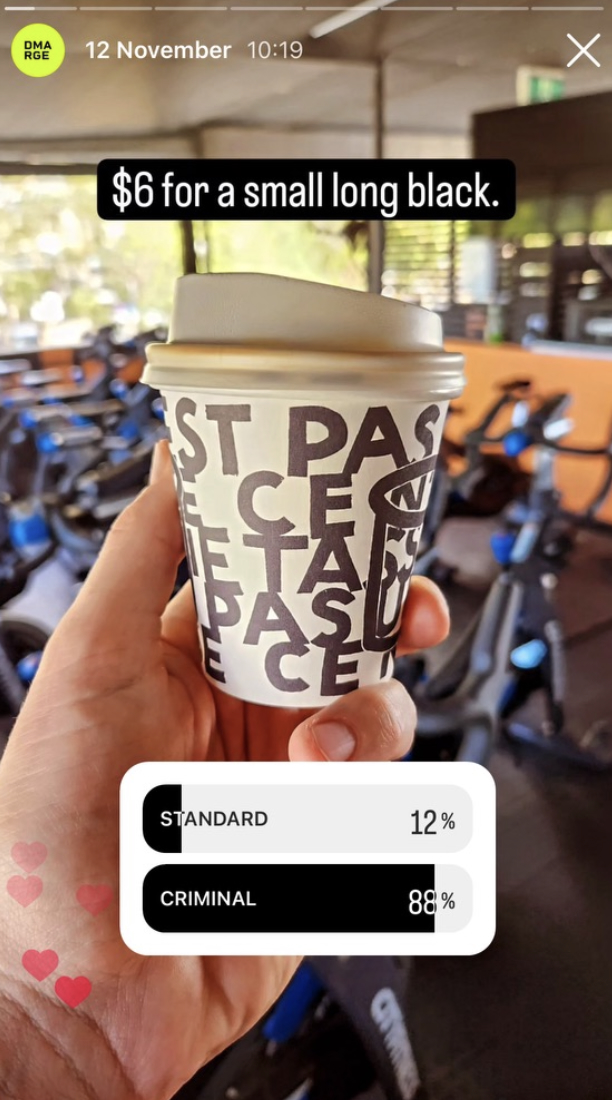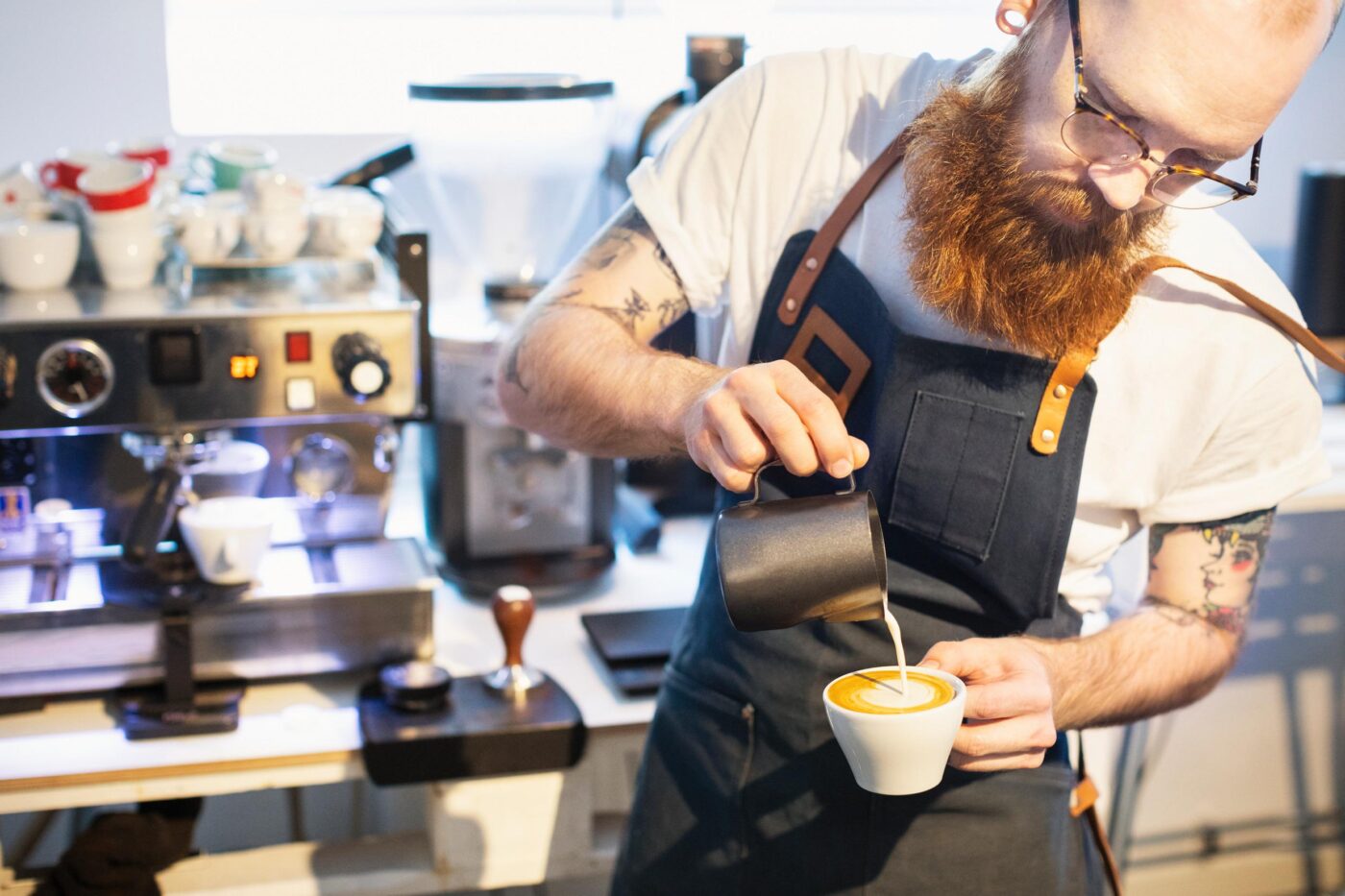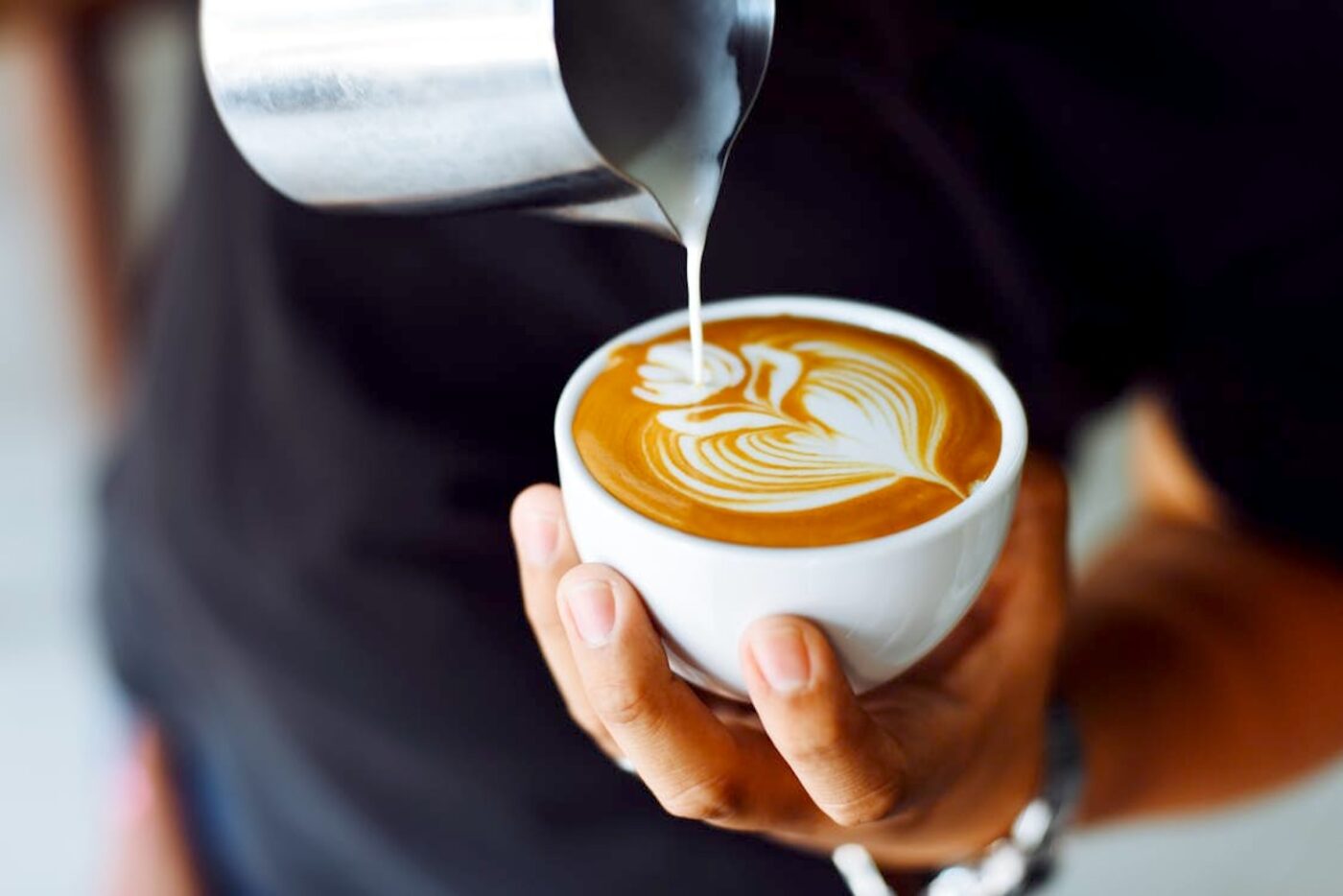We conducted a survey to gauge how Australians are feeling about the cost of coffee. Suffice to say, they’re not happy, but an industry insider explained why things aren’t all that bad.
Coffee is getting more expensive, that’s undeniable. And we’re not just talking about the Melbourne cafe charging $1500 a cup and skewing the numbers for everyone else; prices are creeping up across the board. Last week, we reached out to our loyal readers to gauge how they felt about this and, in short, they don’t feel good about it.
After our founder and editor Luc Wiesman found himself paying $6 for a long black last week, he took to our social media followers to figure out whether the outrage he felt was mirrored by Aussies across the country and… it definitely was. Reaching over 4,500 people, the poll suggests that 88% of Aussies think that’s way too pricey for a cup of joe, with only 12% begrudgingly accepting the new price point.

We wanted to figure out where exactly these cost increases come from and whether Aussies have a right to be quite so upset about them. Never ones for waxing lyrical, we thought it best to reach out to an industry expert for some insider insight; we sat down with Will & Co. Director Josh Passarro, who knows a thing or two about speciality roasting…
Is Coffee Really Getting More Expensive?
Yes, it is. Gone are the days when a shot of coffee cost 20c a pop and I’ll give you three guesses why but highly doubt you’ll need that many. It all comes down to that magic buzzword that we’ve become all too well acquainted with in the post-COVID era: supply chains.
What many forget is that a lot of labour goes into getting your precious coffee from where it’s grown into the hands of your local barista. With growing conditions much more favourable around the equator, most coffee comes into life in Central & South America, Africa, or Indonesia.
Not only does that involve a lot of hard work and logistics in these locations, but it also means the beans have a helluva long journey to get them to Australia’s remote shores. In a post-COVID world, the costs involved in every aspect of this supply chain have increased exponentially:
“What’s been happening with the cost of coffee dates back to 2022 when prices suddenly surged to 120% of what they had been the previous year, hitting the record highs. Things have started to stabilise a little bit but now but it’s still well above where it was five years ago…”
Will & Co. Director Josh Passarro
The Global Price Context
While all the above factors mean that Aussie coffee prices have undeniably been on the uptick in recent months and years, it’s still worth considering the wider context of coffee prices for consumers around the globe. In fact, we wager that if more Aussies were to take stock of how much their European counterparts were paying for a cup of joe, they might be more inclined to count their blessings…
“The coffee quality in Australia — I’m a bit biased — but I think it’s the best in the world. I think it’s also one of the most affordable markets in the world. These days, if you go to Londonyou’re looking at paying A$10 bucks for a coffee…. in comparison to overseas, places like New York and Stockholm and London, [Australia is] still not that bad.”
Will & Co. Director Josh Passarro
As a recently transplanted Englishman, I can attest to this wholeheartedly. Coffee has long been far more expensive there — you’ll be hard-pressed to find a decent cup of coffee for under £3.50 (A$7) but many range closer to the £5 mark (A$10) and if you like a fancy frappucino-style drink they can go far beyond — and is consistently ranked as one of the fastest-increasing commodities by price on those green and pleasant lands.

The Five-Dollar Fence
For all this talk of supply chains and on-the-ground logistics, the age-old truism that something is “only worth what someone is willing to pay for it” holds true and underpins the fact that coffee has stayed so cheap in Australia for so long relative to the rest of the world. As Passaro explains, there was something of a coffee-cost Rubicon in Australia that proved surprisingly hard to cross…
“There was this kind of mentality that quality coffee shouldn’t be over five bucks; that was the threshold in people’s minds.”
Will & Co. Director Josh Passarro
And while Passarro assured me that there are still plenty of places where you can cop a good cup of joe for this bargain price, “the goalposts have moved” in a post-COVID world. As costs have increased for growers, shippers, and labourers at every point in a massive supply chain, cafe owners have to deal with the resulting increased costs somehow.
What Am I Paying For?
For years, they absorbed the costs themselves, unwilling to jump the five-dollar fence. However, many can take it no more. So the only question that remains for Aussie coffee lovers is this: if paying north of $5 for a cup of coffee — with $6-$7 fast becoming the norm in trendy urban centres — how can consumers know if they’re paying over the odds for the same old cup of coffee or just paying what a decent cup of coffees costs?
On this final question, Passarro’s answer was happily straightforward:
“I think the biggest thing is the taste right? If people like it and it’s got a good roster behind it, it’s a reputable brand and everything else then… it comes down to personal preference.”
Will & Co. Director Josh Passarro
And just like that, we find ourselves back at the aforementioned truism. If that $6 is burning a hole in your terribly deep pockets, if you like the vibe of the cafe and the people that run it — and, most importantly — if you like the way it tastes, then go for it. If not, good luck with those caffeine withdrawal symptoms, I’m sure they’ll pass eventually…
